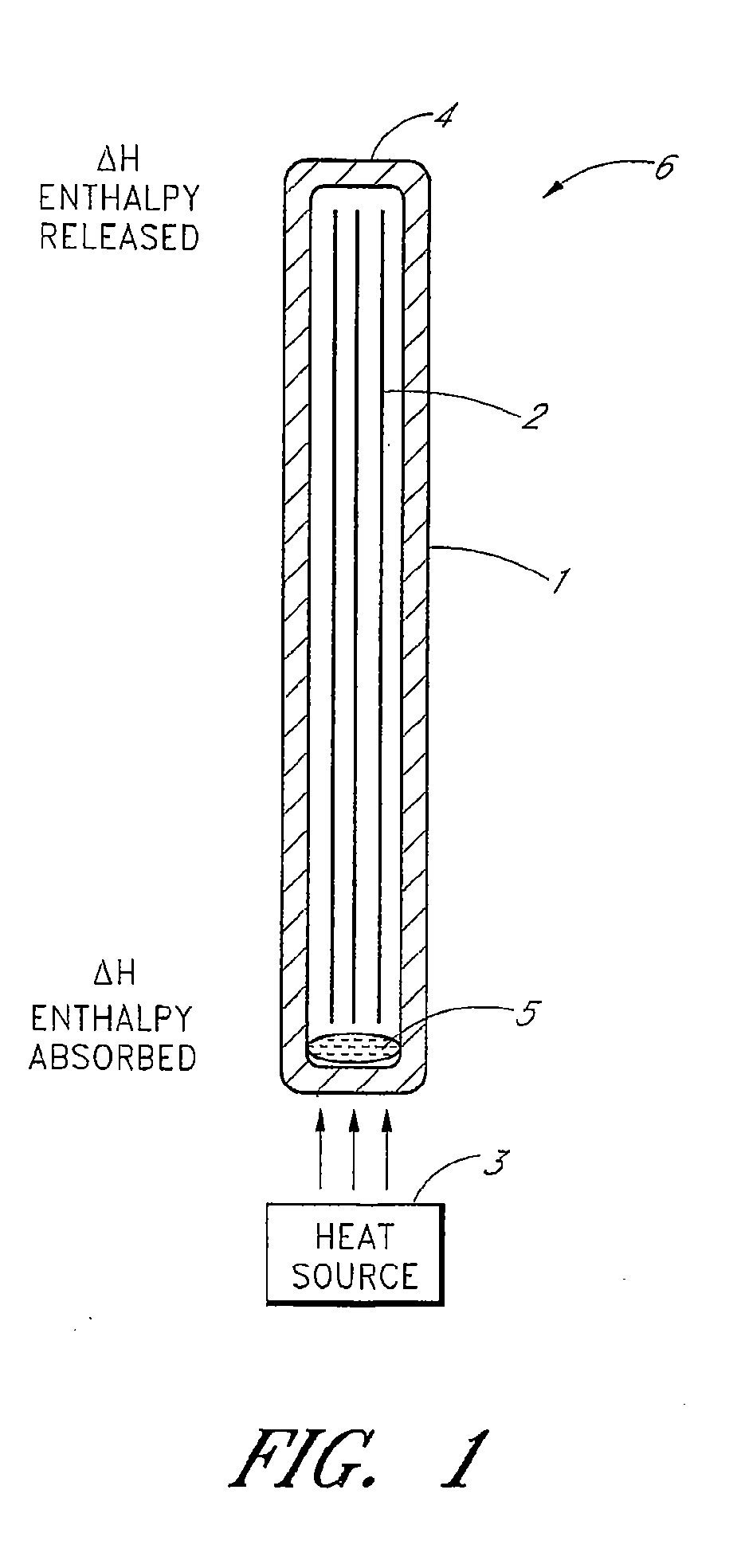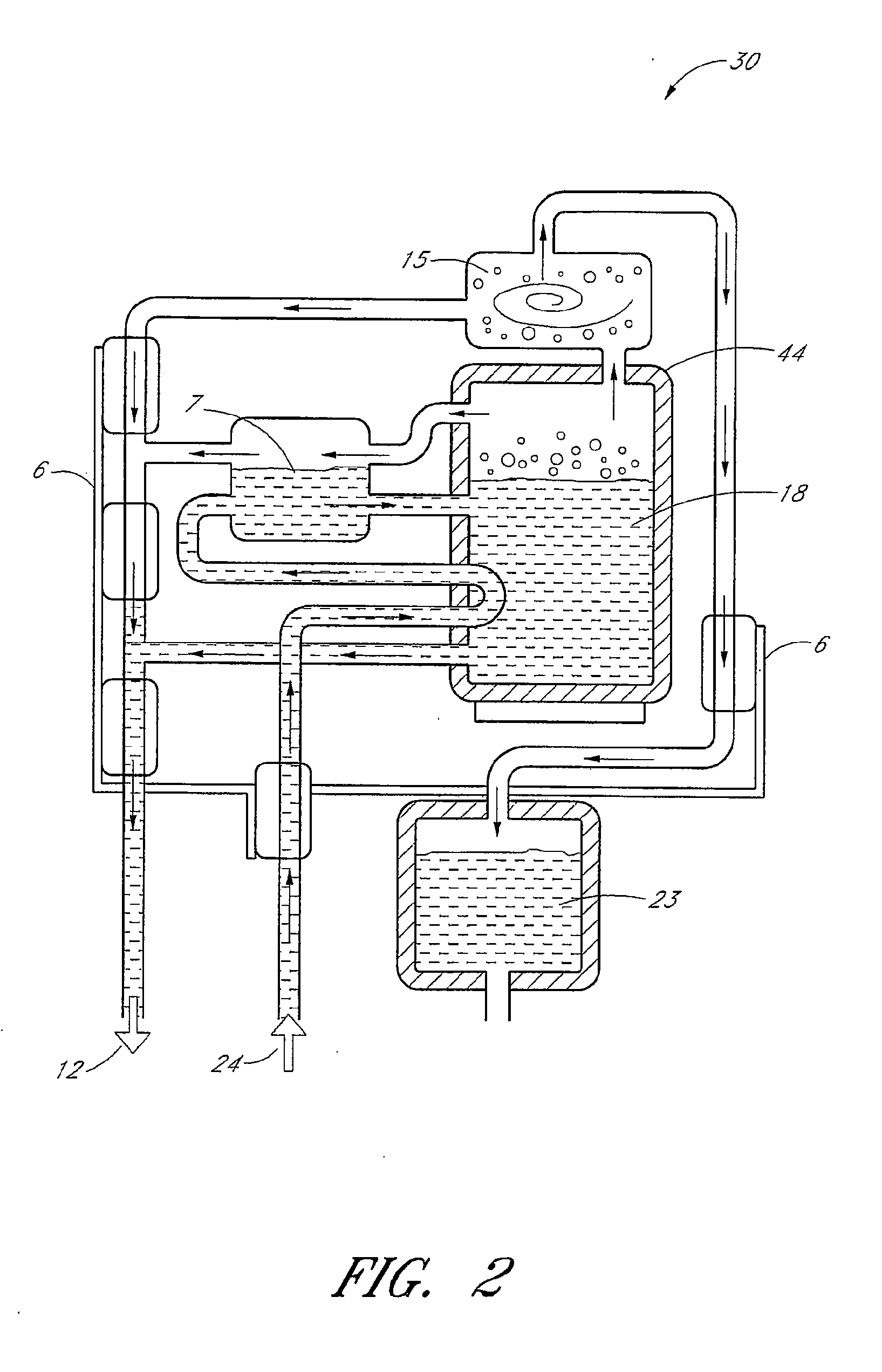Energy-efficient distillation system
- Summary
- Abstract
- Description
- Claims
- Application Information
AI Technical Summary
Benefits of technology
Problems solved by technology
Method used
Image
Examples
Embodiment Construction
[0022]The present invention includes a compact, more effective heat recycling system that can be utilized to recover heat from distillation units without the need for heat exchangers. The inventive concept includes using different configurations of heat pipes that transfer heat from hot waste or product streams to an incoming feed fluid, e.g., water, so as to minimize overall heat requirements for a fluid purification system. Heat pipes rely on the principle of enthalpy transport to transfer heat from one point to another, and they normally require a phase change in the fluid used to transfer heat. Because phase change, from liquid to vapor or solid to vapor (e.g., sublimation) or vice-versa, is always associated with the heat of vaporization or condensation (or heat of sublimation in the case of solids), and because such heats of vaporization are normally very substantial when compared with the specific heat conductivities of most materials, the intrinsic efficiencies of a heat pip...
PUM
| Property | Measurement | Unit |
|---|---|---|
| Vapor pressure | aaaaa | aaaaa |
| Vapor pressure | aaaaa | aaaaa |
| Magnetic energy | aaaaa | aaaaa |
Abstract
Description
Claims
Application Information
 Login to View More
Login to View More - R&D
- Intellectual Property
- Life Sciences
- Materials
- Tech Scout
- Unparalleled Data Quality
- Higher Quality Content
- 60% Fewer Hallucinations
Browse by: Latest US Patents, China's latest patents, Technical Efficacy Thesaurus, Application Domain, Technology Topic, Popular Technical Reports.
© 2025 PatSnap. All rights reserved.Legal|Privacy policy|Modern Slavery Act Transparency Statement|Sitemap|About US| Contact US: help@patsnap.com



